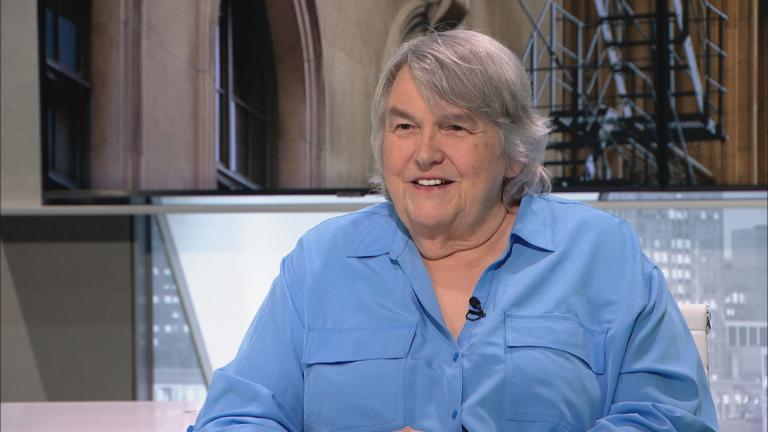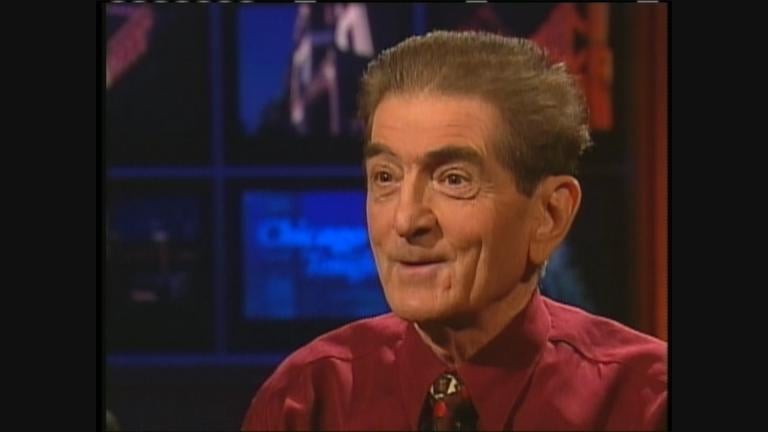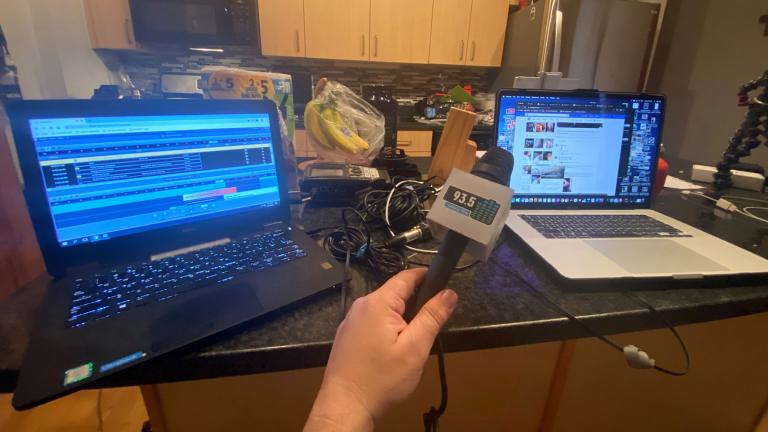AM radio is facing a potentially existential threat.
Most of the car companies manufacturing electric vehicles, a quickly growing market, have dropped AM radio from new vehicles. Because more than 40% of all radio listening is done in cars, there has been major pushback to the growing lack of AM access.
Now, members of Congress on both sides of the aisle have crafted a bill in an effort to save AM radio.
As a result, the Ford Motor Company, which announced plans to not only phase out AM radio in EVs but also in its combustion-engine car models, reversed course and will include AM radio in its 2024 models and is updating software in its EVs to add AM radio.
About half of Chicago’s radio audience uses AM channels, according to the Nielsen ratings company. AM radio reaches a diverse audience with dedicated Black, Hispanic, Polish, news, sports and college stations. In addition, it is also used for the government’s Emergency Alert System.
A group including broadcasters, many Republican and Democratic lawmakers, the Federal Communications Commission, the Federal Emergency Management Agency, the National Association of Broadcasters, farmers and many listeners want AM to stay on the dial.
“In 9/11, the south Towers were down. Nobody could get signals. There was no data. No internet. You couldn’t get anything but a radio signal on a transmitter,” said Mary Sandberg Boyle, vice president and general manager at WGN Radio AM 720. “In disaster situations when there are tornadoes and things, the cell towers aren’t working. The radio reach is much larger than a cell phone signal. And so you can reach more people when they need it most.”
“AM radio is extremely relevant,” said Melody Spann Cooper, chair of Midway Broadcasting Corporation, which owns and operates WVON-1690 AM, which serves Chicago’s Black community, and the Hispanic station, WRLL-AM.
“I’m heading to DC right after this call to lobby Congress tomorrow,” Spann Cooper said. “I’m sitting with seven or eight congress people talking about the importance of this [AM radio] band and the information we deliver to constituencies across this country — not just Black, not just Latinos.”
The AM for Every Vehicle Act would have the National Highway Traffic Safety Administration require automakers to keep AM radio in new cars at no additional cost.
One problem is that AM radio frequencies have issues with electric vehicles — drivers hear buzzing over the radio content. Now, EV manufacturers like Ford are pushing software updates to correct the problem on 2023 and earlier models. However, the software won’t work if cell phone towers are not functional.
“There’s an actual physical thing that can be put into an EV that allows, in theory, you to get an AM signal still if cell phone towers are down. Just software’s not going to get an AM signal.” said Sandberg Boyle. “You’re not going to have data coming in. The reason why it’s not in the electric cars is because it creates a buzz or some type of feedback noise, but that can be mitigated by spending a little more money and encasing that so that that noise doesn’t occur.”
Arionne Nettles, director of Audio Journalism Programming at Northwestern University’s Medill School of Journalism, said the move is likely out of touch with the habits of listeners.
“The initial thought process was, ‘well, we can just stop making them because who listens to AM anyways?’” said Nettles.
The move was reminiscent of other decisions by companies thinking they had audience in mind, she said.
“This is something that we’ve seen honestly in the past where, kind of more innovative companies often are not always in touch with the entire country and their needs,” added Nettles. “[Companies] are not always thinking about the greater society and what their needs are and how they may use older technology before deciding that it’s not as important anymore.”
Some manufacturers argue that AM audiences are shrinking and there’s plenty niche programming found on podcasts, online or on satellite radio. However, just leaving AM in the dust may not be the natural evolution of radio.
“There’s been a lot of research around that,” said Nettles. “Yes, there are more people who are getting their news from podcasts than ever before, and I think it is really, really important to pay attention to that growth and to cater to that growth especially with younger generations that they are really high on that consumption level, but in a lot of ways it still cannot replace radio right now.”
Breaking news, traffic, sports, weather-related emergencies and breaking public safety issues are some of the clearest examples of on-the-minute coverage that are popular for AM stations.
“An on-demand podcast could the next day give you really good analysis ... help you understand maybe why some stuff happened,” Nettles said. “But, in the moment, you really need radio and you need it to be able to reach everyone.”
Spann Cooper, along with other members of the Illinois Broadcasters Association, will be lobbying lawmakers on Wednesday. A legislative hearing on H.R. 3413 – AM Radio for Every Vehicle Act of 2023 — has not yet been scheduled.
The Energy and Commerce Communications and Technology Subcommittee held a hearing on the issue June 6.








